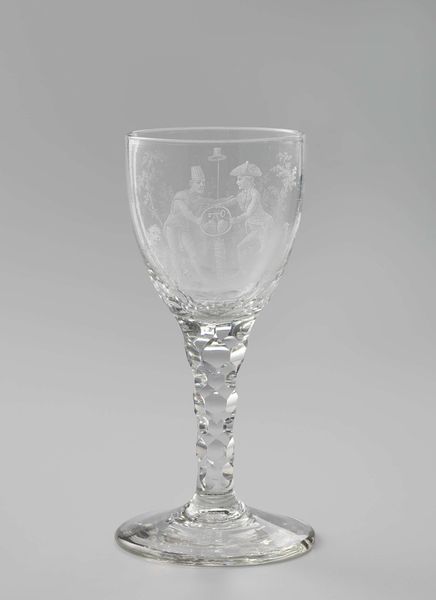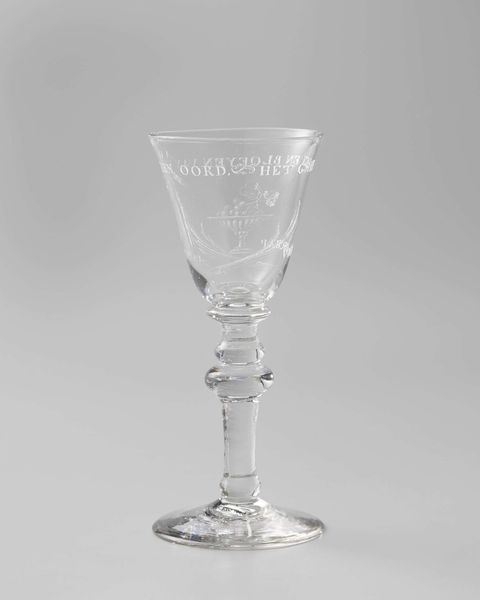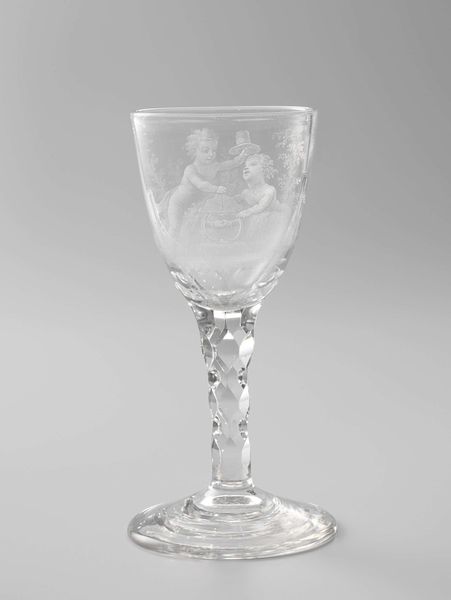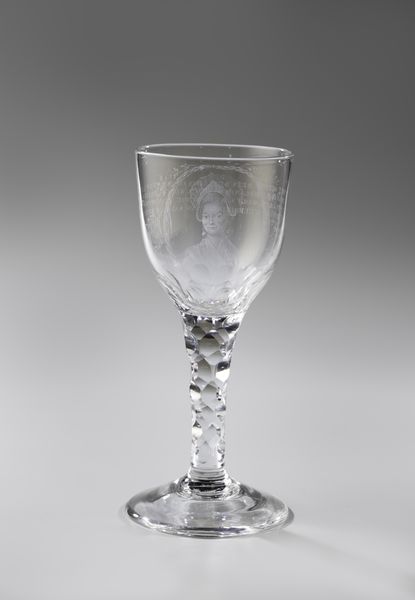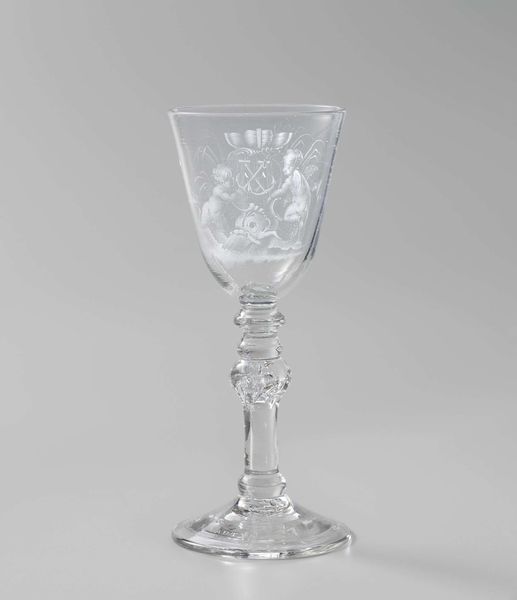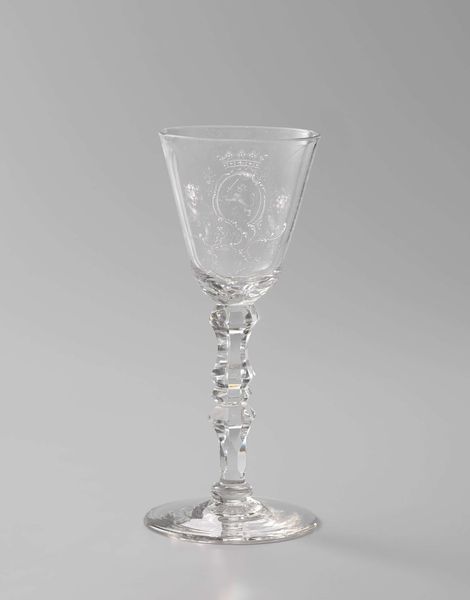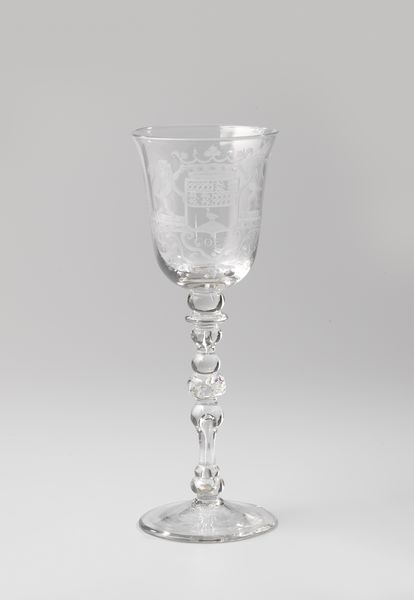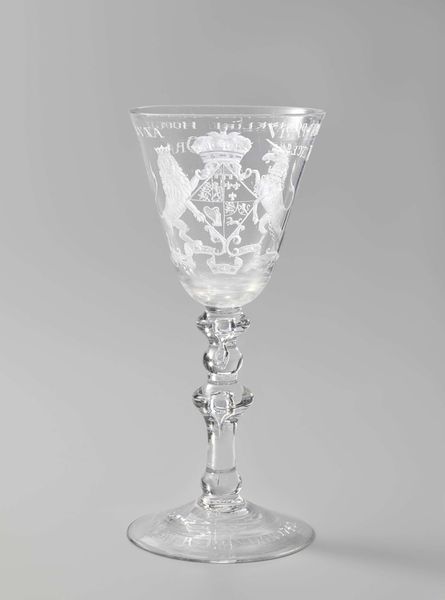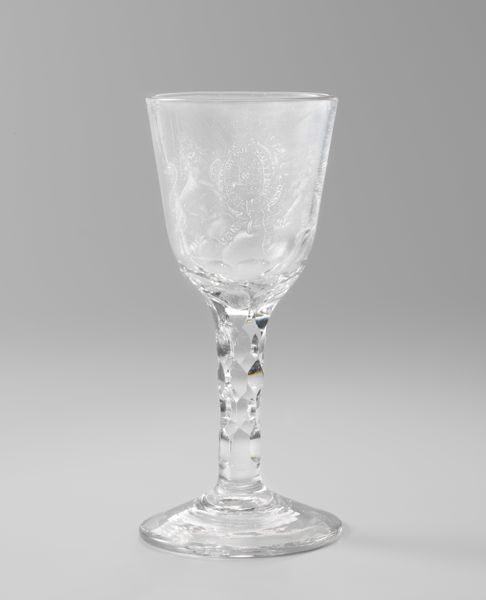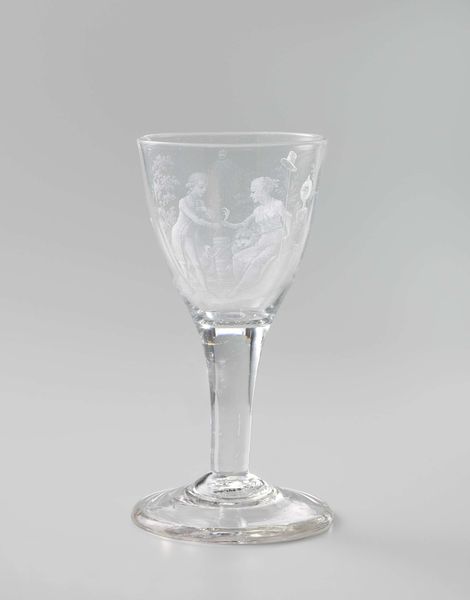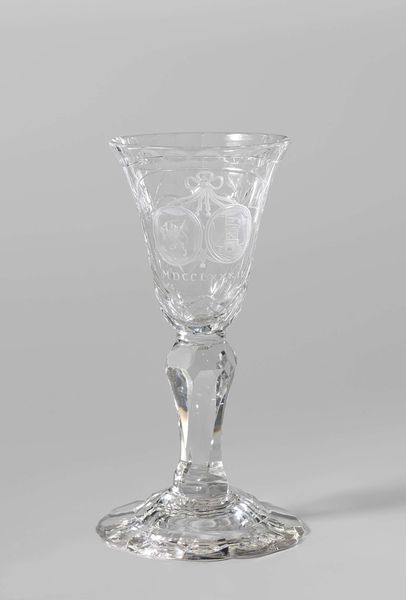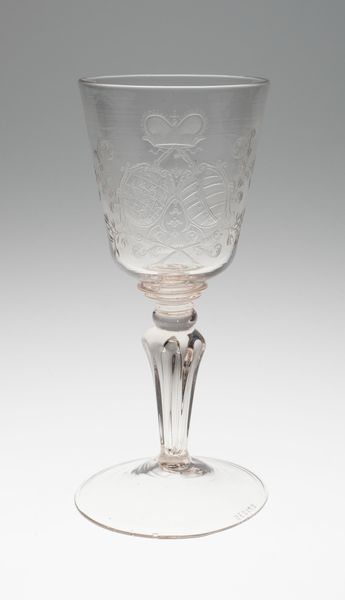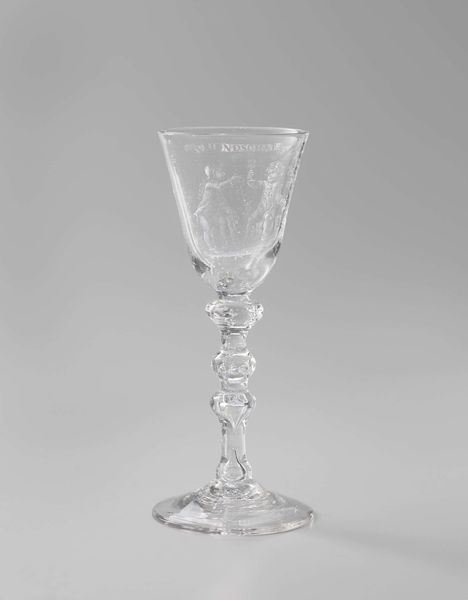
glass, engraving
#
portrait
#
neoclacissism
#
glass
#
engraving
Dimensions: height 17.3 cm, diameter 7.3 cm, diameter 8.8 cm
Copyright: Rijks Museum: Open Domain
Curator: At first glance, it's just a glass—delicate and rather old. But then the engraved portrait catches the eye. Editor: Yes, it's a wine glass, actually a 'kelkglas', dating back to 1796. What's particularly fascinating is the engraved portrait of Willem V, the Prince of Orange. It reflects a pivotal moment in Dutch history and identity. Curator: A utilitarian object elevated by this political representation. It prompts the question of the labour involved. Was it a mass-produced object with an added luxury of personalised engraving or a special commission from the outset? Editor: Exactly. Consider Willem V’s leadership during a period of immense social and political upheaval, culminating in the Batavian Revolution. This glass becomes a lens through which to examine shifting power dynamics and anxieties related to monarchy, revolution, and nationalism. It acts as a tiny memorial of sorts. Curator: Absolutely. And what about the artisan? The means of production are paramount, how was the glass made and engraved? There's such meticulousness and skill evidenced in the detailing on this diminutive object. Did they harbor political affiliations? Who might have consumed from it, and under what circumstances? It begs the question, did it function as a status symbol? Editor: The act of memorializing Willem V in such a delicate, and perhaps somewhat subversive, way definitely opens up intriguing lines of inquiry about allegiance, class, and personal convictions. What stories might this little glass tell if it could speak? Curator: Yes! Considering glass as a medium is equally important, though fragile it becomes a carrier for quite weighty social narratives. It bridges the gap between functional ware, artisanry, and politically charged symbols. Editor: Thinking about it that way allows us to approach art history not just as a series of aesthetic movements but as interwoven dialogues with history and broader social, political landscapes. Curator: Precisely. Thank you. Editor: My pleasure.
Comments
No comments
Be the first to comment and join the conversation on the ultimate creative platform.
